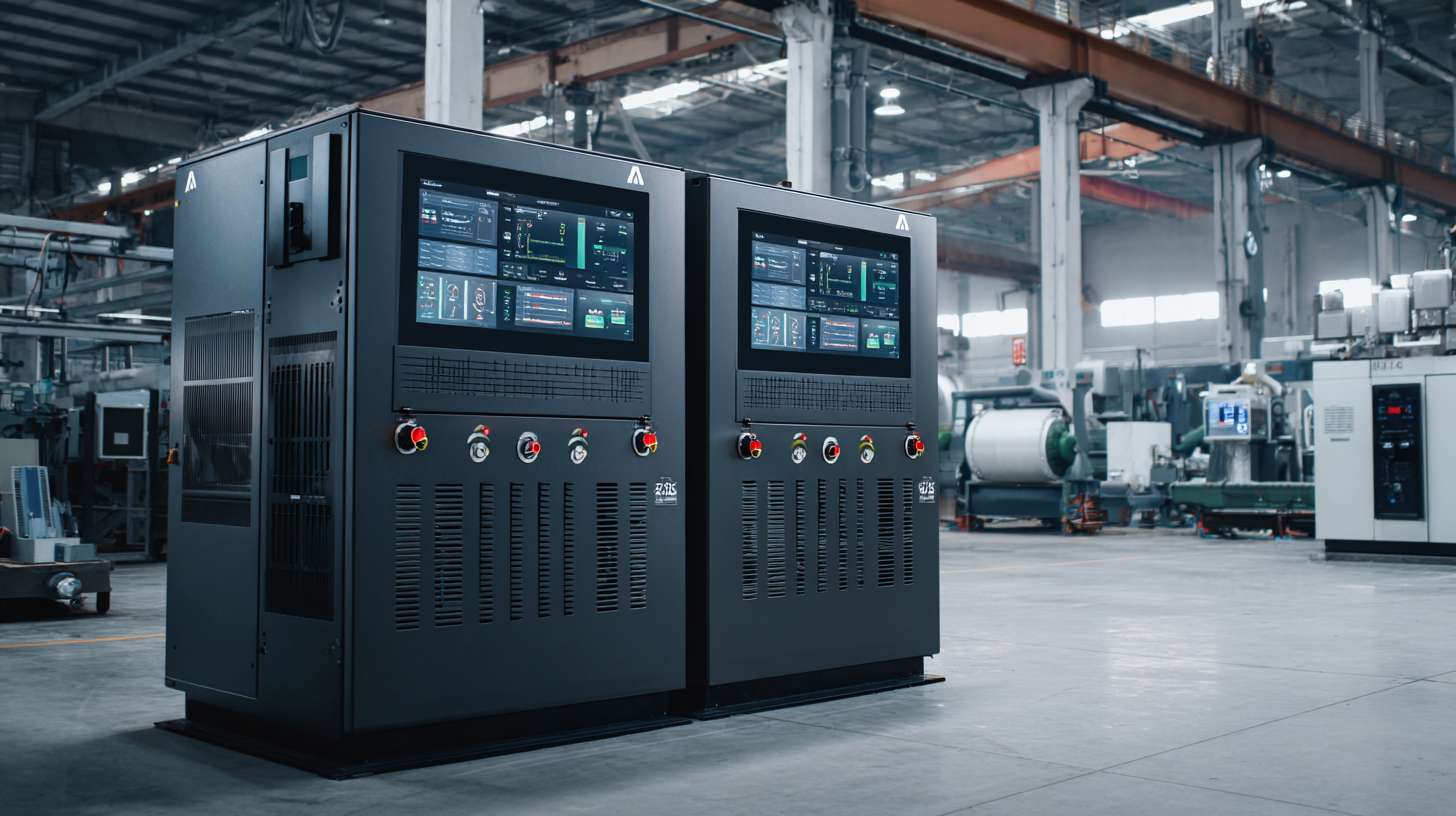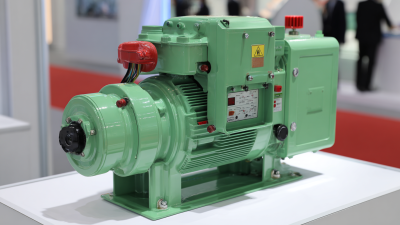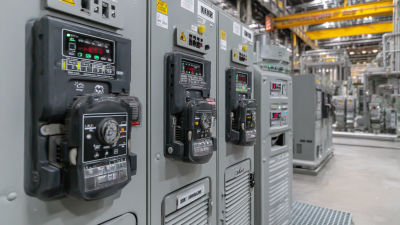Understanding the Benefits of VFD Drive Technology in Modern Industries
In the context of modern industries, the implementation of Variable Frequency Drive (VFD) technology has emerged as a pivotal advancement that enhances operational efficiency and energy savings. According to a report by the U.S. Department of Energy, VFD drives can lead to energy savings of up to 50% for electric motors by precisely controlling their speed and torque. Furthermore, a study by the International Energy Agency indicated that the adoption of VFD technology in industrial applications could reduce greenhouse gas emissions significantly, contributing to sustainability goals. As industries strive to optimize production processes and reduce costs, the VFD drive's ability to improve equipment reliability and lower maintenance costs makes it an indispensable asset. This understanding of VFD technology not only highlights its integral role in enhancing productivity but also underscores the broader environmental implications, making it a key focus for industry leaders aiming for a more efficient and sustainable future.

Exploring the Fundamental Mechanism of VFD Drive Technology in Industrial Applications
Variable Frequency Drive (VFD) technology plays a crucial role in the optimization of industrial applications by regulating the speed and torque of electric motors. The fundamental mechanism of VFD involves varying the frequency and voltage supplied to the motor, which directly influences its operational efficiency. By adjusting these parameters, VFDs enable motors to operate at different speeds, providing precise control over mechanical processes and enhancing overall performance.
In practical terms, VFDs are particularly beneficial in applications such as conveyor systems, pumps, and fans, where load requirements can fluctuate significantly. This technology allows for significant energy savings, as motors can run at lower speeds during reduced demand, reducing energy consumption and operational costs. Furthermore, VFDs contribute to prolonging the lifespan of equipment by minimizing mechanical stress during startup and stopping phases, which is achieved through gradual acceleration and deceleration. Overall, the implementation of VFD technology in industrial settings not only promotes efficiency but also supports sustainable practices.
Understanding the Benefits of VFD Drive Technology in Modern Industries
| Aspect | Description | Benefits |
|---|---|---|
| Energy Efficiency | VFDs adjust the speed and torque of motors based on demand. | Reduces energy consumption, leading to lower operational costs. |
| Process Control | Allows precise control of motor speed and acceleration. | Enhances product quality and consistency in manufacturing processes. |
| Equipment Longevity | Reduces mechanical stress on motors by soft starting and stopping. | Decreases maintenance costs and extends the lifespan of machinery. |
| Operational Flexibility | Easily programmable for different operational parameters. | Adaptable to varying production requirements and workflows. |
| Noise Reduction | Operates motors smoothly, reducing vibration and noise. | Creates a quieter working environment, enhancing safety and comfort. |
Identifying Key Advantages of VFD Drives Over Traditional Drive Systems
Variable Frequency Drives (VFDs) present numerous advantages over traditional drive systems, which rely on fixed-speed operation. One key benefit of VFD technology is energy efficiency. By allowing motors to operate at variable speeds, VFDs minimize energy consumption during partial-load conditions, translating into significant cost savings for industries that require precise speed control. Furthermore, the ability to adjust speed according to specific operational demands leads to a decrease in overall energy costs.
Another important advantage is enhanced control and flexibility. VFDs enable smooth acceleration and deceleration, reducing mechanical stress on components and extending the lifespan of machinery. This granular control enhances process precision, which is particularly beneficial in applications like conveyor systems and fans. Additionally, VFDs support advanced features such as diagnostics and real-time monitoring, allowing operators to optimize performance and predict maintenance needs. This not only improves the reliability of systems but also contributes to safer and more productive industrial environments.
Assessing Energy Efficiency and Cost Savings with VFD Technology
Variable Frequency Drives (VFDs) play a crucial role in enhancing energy efficiency across various industries. By allowing precise control over motor speed and torque, VFD technology significantly reduces energy consumption by matching output power to the actual demand of the process. This adaptability not only minimizes wasted energy during low-load conditions but also leads to substantial cost savings on electricity bills.

Moreover, the implementation of VFDs can lead to reduced wear and tear on mechanical components, extending the lifespan of equipment. This decrease in maintenance costs further contributes to overall savings for businesses. As industries increasingly focus on sustainable practices, the energy efficiency achieved through VFD technology presents a compelling case for its widespread adoption, positioning it as an essential solution for modern manufacturing and processing operations.
Enhancing Process Control and Precision in Manufacturing with VFD Drives
Variable Frequency Drives (VFDs) have transformed the landscape of modern manufacturing by significantly enhancing process control and precision. By adjusting the speed and torque of electric motors, VFDs allow for real-time modifications to production processes, enabling manufacturers to respond swiftly to changes in demand or operational conditions. This adaptability leads to more efficient workflows and reduces energy consumption, contributing to greener operations.
Furthermore, the implementation of VFD technology promotes precision in manufacturing. With the ability to fine-tune motor performance, manufacturers achieve tighter tolerances and more consistent outputs. This precision not only minimizes waste and rework but also improves product quality, as processes can be optimized for specific requirements. Overall, VFD drives are instrumental in streamlining production lines, ensuring that industries can meet the rising demand for efficiency and high-quality output in a competitive market.
Understanding the Benefits of VFD Drive Technology in Modern Industries
This chart showcases the impact of VFD (Variable Frequency Drive) technology on various manufacturing process parameters. The data represents the percentage improvement in efficiency and precision across key metrics such as energy consumption, process control, and equipment lifespan.
Evaluating the Impact of VFD Technology on Sustainability and Environmental Goals
 Variable Frequency Drives (VFDs) have become a critical component in modern industrial applications, particularly in improving sustainability and achieving environmental goals. By adjusting the speed and torque of electric motors, VFD technology significantly reduces energy consumption, leading to lower greenhouse gas emissions. This efficient management of electric power not only cuts down operational costs but also aligns with global efforts to mitigate climate change. Moreover, VFDs facilitate precise control over processes, resulting in reduced wear on machinery and extending equipment lifespan, which further decreases waste and material use.
Variable Frequency Drives (VFDs) have become a critical component in modern industrial applications, particularly in improving sustainability and achieving environmental goals. By adjusting the speed and torque of electric motors, VFD technology significantly reduces energy consumption, leading to lower greenhouse gas emissions. This efficient management of electric power not only cuts down operational costs but also aligns with global efforts to mitigate climate change. Moreover, VFDs facilitate precise control over processes, resulting in reduced wear on machinery and extending equipment lifespan, which further decreases waste and material use.
The environmental benefits of implementing VFD technology extend beyond mere energy savings. With the ability to fine-tune motor operations, industries can optimize their production processes to minimize resource utilization and decrease the formation of pollutants. For example, in water treatment facilities, VFDs help in managing flow rates more efficiently, thereby reducing both chemical usage and energy expenditure. As industries strive to meet increasingly stringent environmental standards, VFD technology represents a viable solution to enhance operational efficiency while promoting sustainable practices.
Related Posts
-

Digital Revolution Best VFD Controller for Maximizing Energy Efficiency and Performance
-

Essential Guide to Optimizing Industrial Motors with 3 Phase Soft Starters
-

How to Choose the Right Circuit Breakers for Your Home and Business Needs
-

Exploring Manual Motor Starter Innovations at the 138th China Import and Export Fair in 2025
-

Unlocking Energy Efficiency: The Role of Variable Frequency Motor Controllers in Modern Industries
-

Maximizing Efficiency: How Advanced Motor Starters Improve Energy Consumption in Industrial Applications
